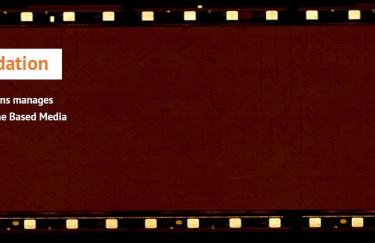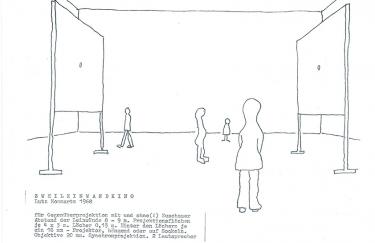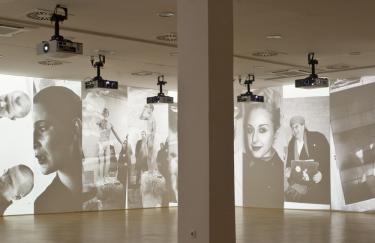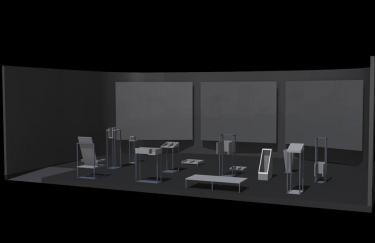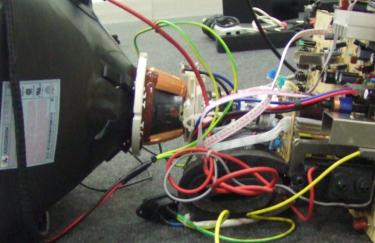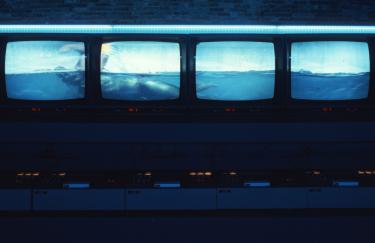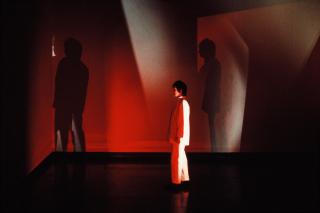
Case Study 5: Nan Hoover, Light Composition
Typ
Case studyDate
18.11.2012Light Composition: Documenta 8 was a composition of a light installation and a performance that took place inside it, it clearly illustrated Nan Hoover’s concentration on light and moving as ways of creating form, which would come to characterize all of her later work. This work also represents a crucial stage in Nan Hoover’s oeuvre, because it was the artist’s first international appearance and its conceptual preparation coincided her becoming a professor at the Kunstakademie Düsseldorf in 1986.
Nan Hoover’s light installation was set up in the Neue Galerie through documenta 8, but she probably presented her performance in the light room only on opening day of the exhibition (21 August 1987). After that, the furnished light room was open to the public. The IMAI archive has a video recording of Nan Hoover’s performance in Kassel that is just over three minutes long. It is part of a video documentation titled DOCUMENTA 8 PERFORMANCE ACTION RITUAL, which was put together by Elisabeth Jappe. It shows the artist in a completely empty room. She is wearing white clothing and moving very serenely and slowly through the room. Red light projections are cast on the white walls, partially overlapping, creating concentrations and geometric patterns on the walls. The shadow of Nan Hoover’s silhouette is also visible on the walls, depending on where she is standing the room. Similar shadow plays result when visitors move through the room.
This case study was intended to determine which components made up the work Light Composition: Documenta 8 as it was realized materially in Kassel and whether a new presentation—after the death of the artist—could be successful. An effort was made through research, primarily in the archive of the Kunstakademie Düsseldorf which holds Nan Hoover’s papers, and through interviews with people from her circle and other eyewitnesses to gather enough information about Light Composition: Documenta 8 to permit a possible reconstruction of the work. On the one hand, the technical means, work materials, and spatial dimensions of the light installation had to be determined in order to consider rebuilding them. On the other hand, it was necessary to study the conceptual relationship between the light room and Nan Hoover’s performance. Can the light installation be regarded as an autonomous part of the work that could be shown without the performance? And, if not, are there ways to “replace” the performance of the now-deceased artist as a component of the work (e.g., be re-presenting the performance or the video documentation of the original performance)?
Although a great deal of new information about how Nan Hoover worked and about the planning of Light Composition: Documenta 8 could be brought to light, in the end there were too many unanswered questions about the technical equipment and construction of the light installation. Based on our current knowledge, no authentic reconstruction of the light room of Light Composition: Documenta 8 is possible, so that we decided against rebuilding it. We have, however, come to the conclusion that if a defensible reconstruction of the light installation were possible, the interplay with the video documentation of Nan Hoover’s performance would be a presentation option that would certainly conform to the artist’s concept.
This case study was conducted with assistance from certified restorer Fenna Yola Tykwer.

